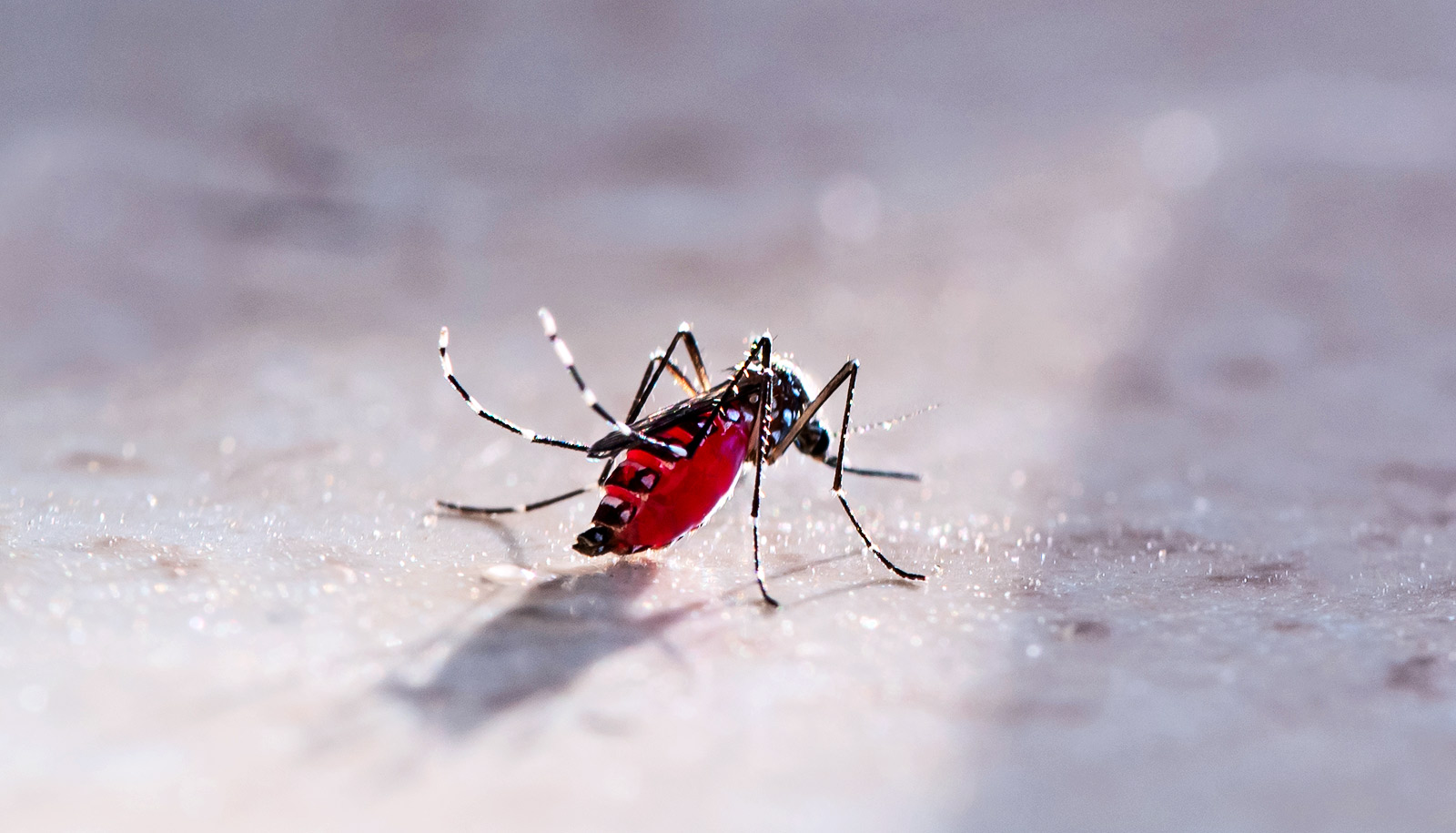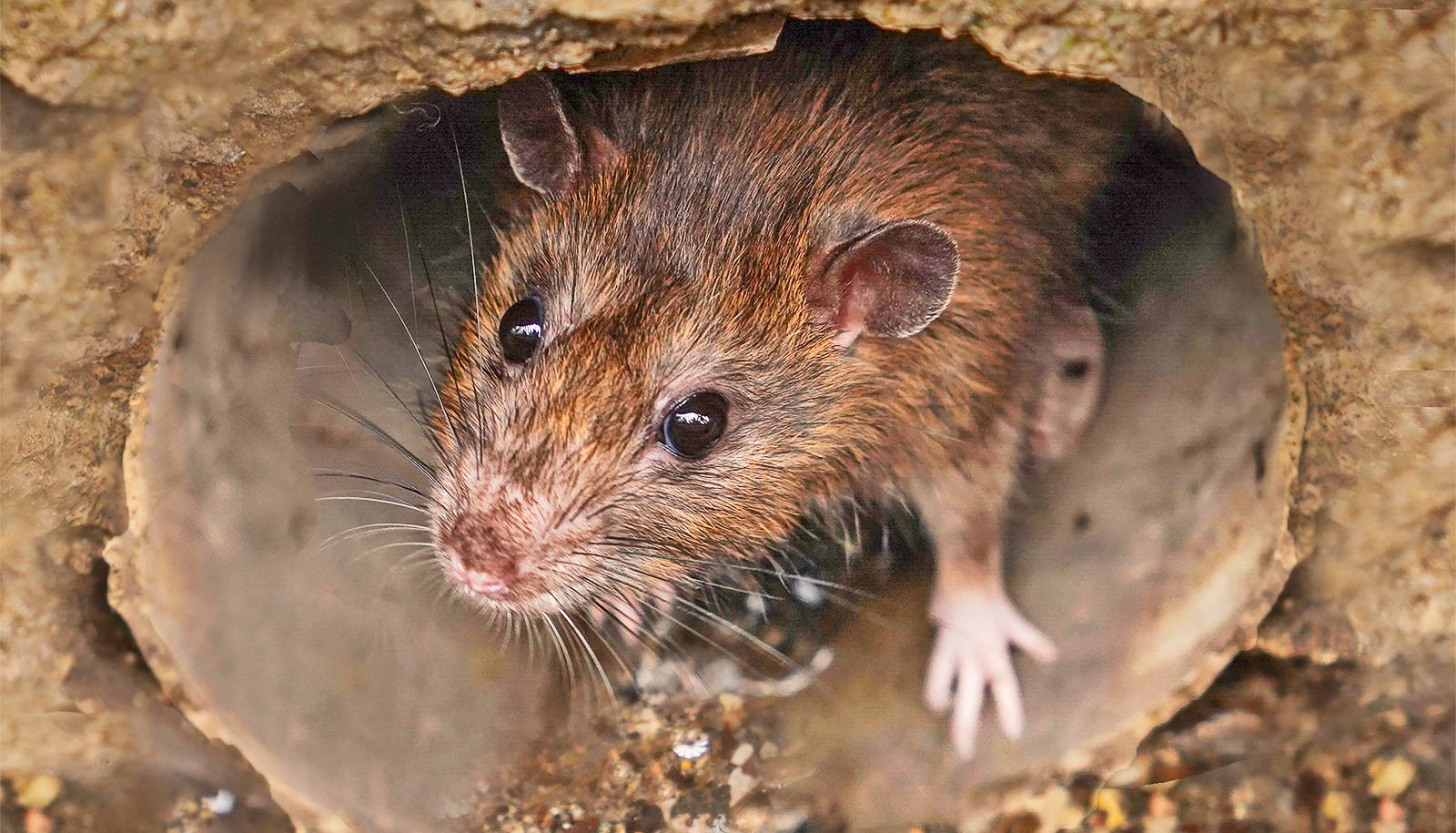Scientists know a little bit more about how a bacterium called Wolbachia prevents mosquitoes from transmitting deadly diseases such as dengue fever, West Nile virus, and Zika.
A new study is one of the first to identify the specific biological mechanism that prevents mosquitoes infected with the bacterium from transmitting these diseases to humans and may even open a path to ways to block disease transmission without Wolbachia, an organism whose long-term effect on the environment is unknown.
“There’s a real argument that some parts of the world are so strongly affected by these diseases that we need to try everything we can right away,” says Irene Garcia Newton, assistant professor of biology at Indiana University and lead author of the study in PLOS Pathogens.
“But you’ve also got to remember that we’re releasing insects into the wild that could potentially spread all over the planet very quickly, so it’s important to move cautiously.”
The use of Wolbachia-infected mosquitoes to curtail the spread of human diseases—a method called “pathogen blocking”—has already been implemented in some parts of the world, including in Florida to block the spread of Zika.
Mosquitoes only mate once and 4 other facts
The spread of other insect-borne diseases is also expected to rise significantly in North America over the next several decades due to environmental change, according to the Centers for Disease Control and Prevention.
To explore the biological mechanisms behind pathogen blocking, scientists designed a model system consisting of Wolbachia-infected fruit flies and the Sindbis virus, which is easier—and safer—to manipulate in the lab than infectious agents such as the Zika or West Nile viruses.
“We’ve got a lot of genetic tools for Sindbis virus and fruit flies,” says coauthor Richard Hardy, professor of biology. “This means we’re able to label different parts of the virus genome and track replication of its RNA inside the host insect.”
Based upon a comparison of Wolbachia-infected versus uninfected fruit flies, the scientists found that flies with the bacterium produced significantly higher levels of Mt2, a gene that encodes a type of enzyme known as a methyltransferase.
They then used genetic tools to create two types of fruit flies: one that lacked this enzyme and another that produced unusually high levels of it.
Malaria fight focuses on 2 mosquito bacteria
The flies without the enzyme lost their ability to “block” the transmission of the Sindbis virus after infection with Wolbachia. The flies that produced high levels of the enzyme were resistant to the Sindbis virus—even if they weren’t infected with Wolbachia.
“The fact that flies with high expression levels of this enzyme were protected against virus infection despite the absence of Wolbachia is very significant,” says Tamanash Bhattacharya, a PhD student and first author on the study. “These results suggest that the methyltransferase t2 alone is sufficient to create a virus protection effect.”
Moreover, this protective effect likely applies to the transmission of other, deadlier viruses, not only the Sindbis virus. The lack of genetic similarities between viruses blocked by Wolbachia suggests that the bacterium blocks viruses through effects on the host.
There are a number of reasons scientists are interested in pursuing methods of pathogen-blocking without Wolbachia, Newton says. The widespread release of Wolbachia-infected mosquitoes could potentially trigger the rise of viruses resistant to the bacteria, for example.
There is also a lack of large-scale epidemiological studies to scientifically determine whether pathogen blocking actually prevents outbreaks.
“Right now, we know only that mosquitoes infected by Wolbachia don’t transmit diseases—but but we don’t really know how,” Newton says. “If we don’t understand the biological mechanisms behind pathogen blocking, we can’t really know what will happen over the long term when we release these mosquitoes.”
The National Institutes of Health’s National Institute of Allergy and Infectious Diseases funded the work.
Source: Indiana University



